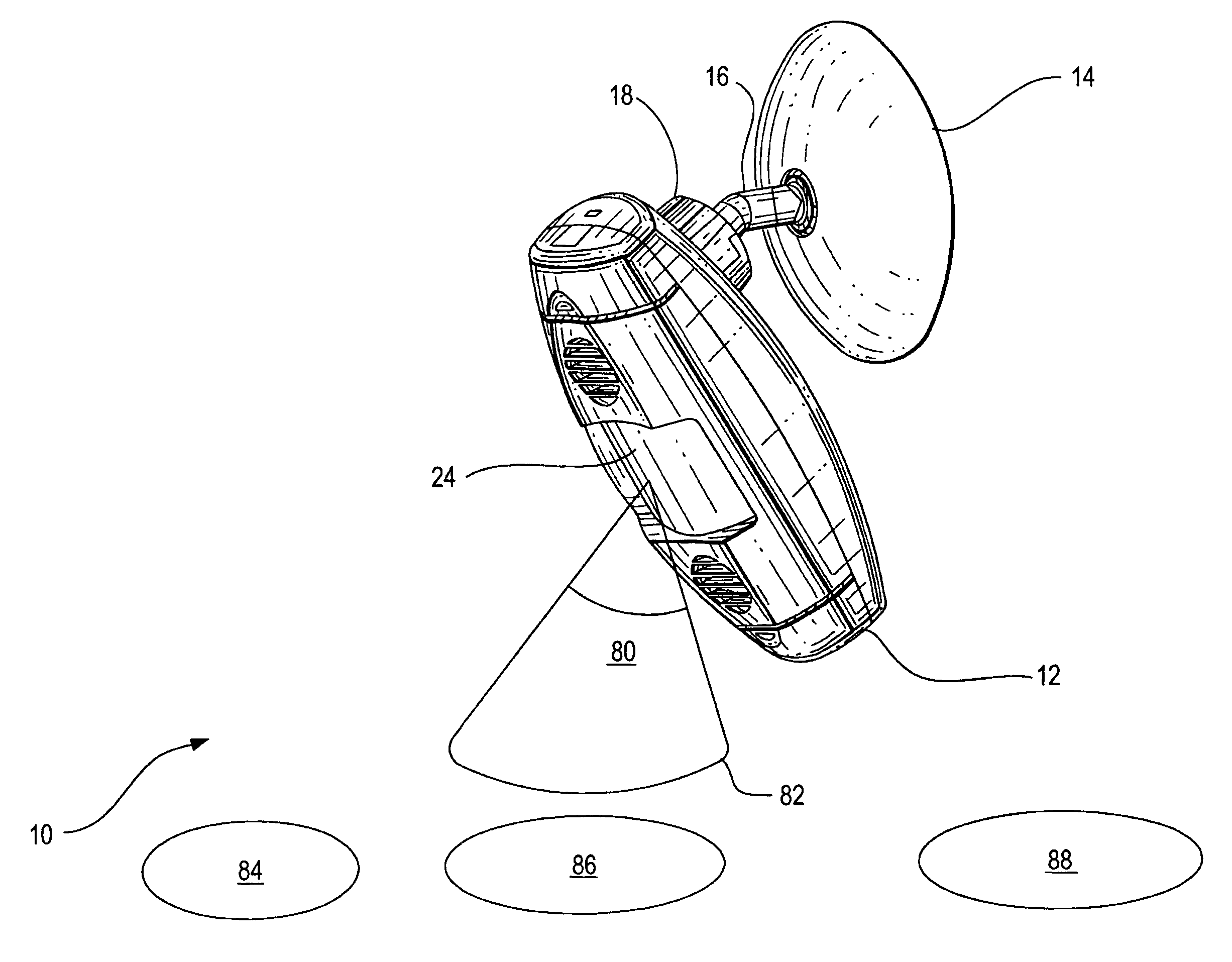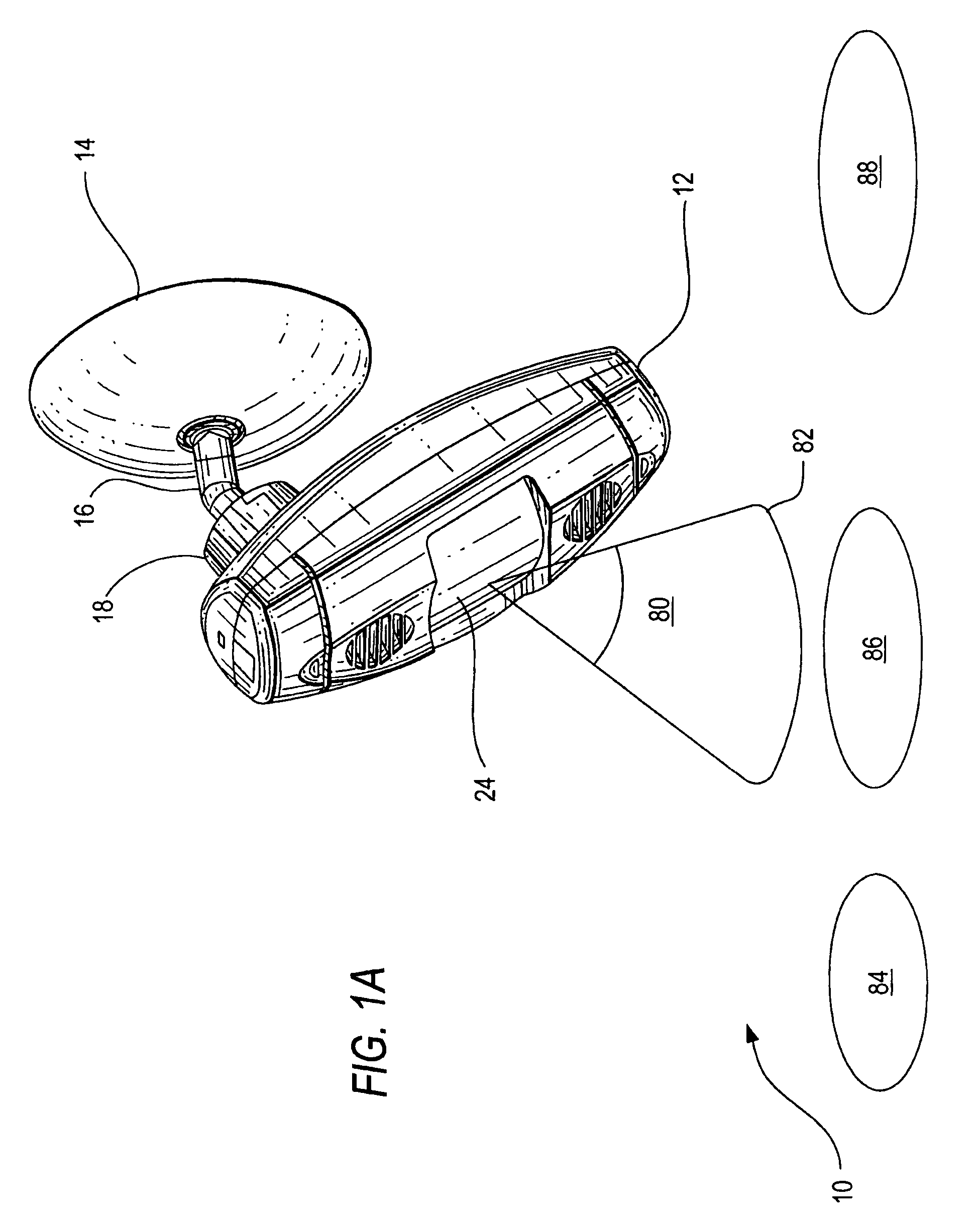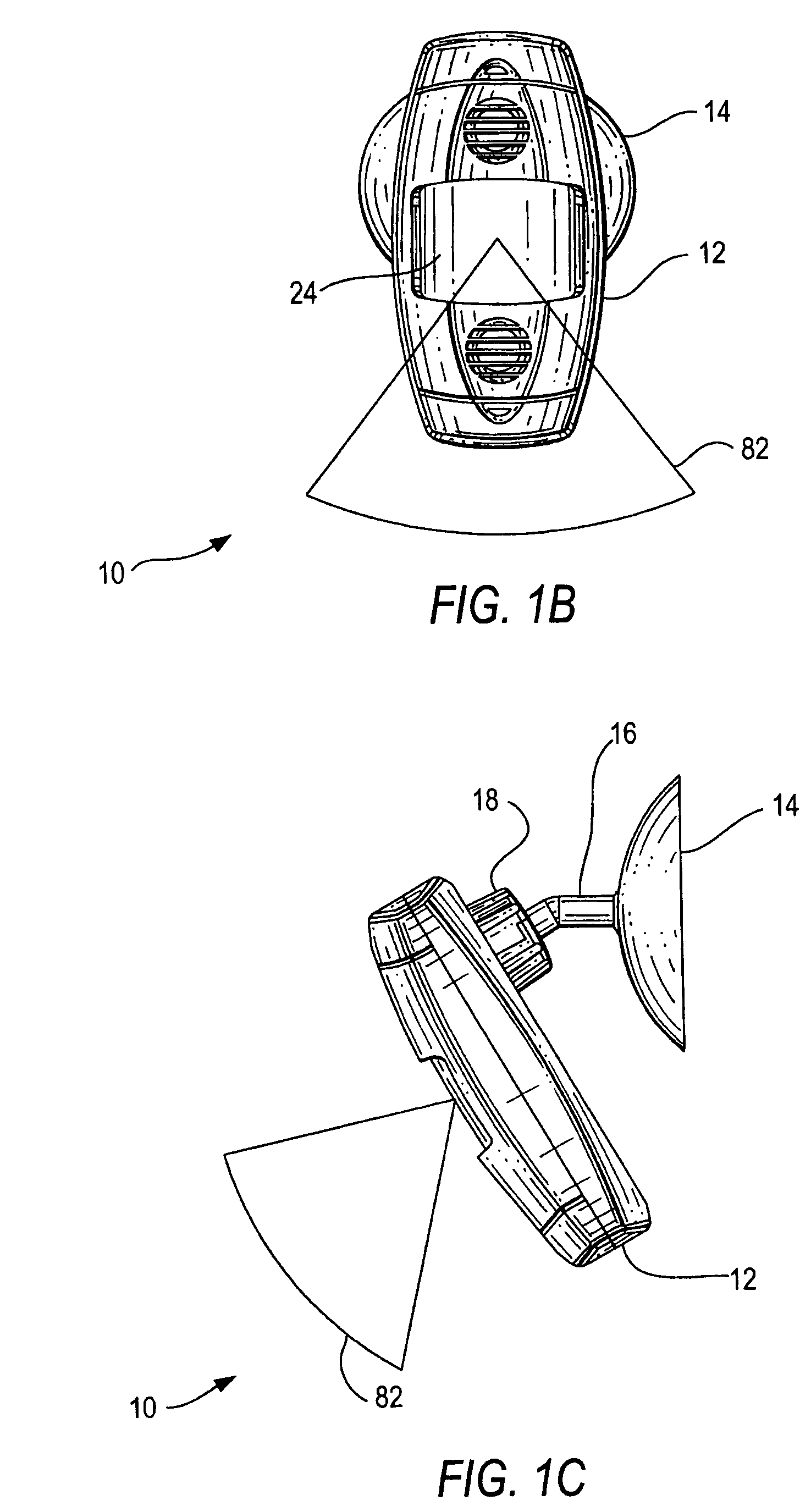Occupancy wall sensor
a sensor and occupancy wall technology, applied in the field of occupancy wall sensors, can solve the problems of damage to the sensor, difficult adjustment, and inability to readily find tools, and achieve the effects of quick and easy mounting, improved sensor adjustment, and easy replacemen
- Summary
- Abstract
- Description
- Claims
- Application Information
AI Technical Summary
Benefits of technology
Problems solved by technology
Method used
Image
Examples
Embodiment Construction
[0021]The present invention discloses an occupancy sensor having a passive infrared (PIR) lens holder coupled to a versatile mounting mechanism for adjusting the scanning or coverage area of the sensor without the use of a tool. The mounting mechanism includes a base neck member having a first end employing a ball-socket coupling to the PIR lens holder sensor body and a second end using a rotatable coupling to a mounting base. The ball-socket coupling and the rotatable coupling mechanism provide a combination of two freedoms of rotation for enhanced sensor adjustment. The lens is part of a replaceable lens holder which allows for easy replacement of a damaged lens. Although one embodiment of the present invention is directed to PIR sensing means, the techniques of the present invention are also applicable to other occupancy sensing technologies such as ultrasonic microwave means or a combination thereof.
[0022]Referring to FIGS. 1A–1D, there is shown different views of an occupancy s...
PUM
 Login to View More
Login to View More Abstract
Description
Claims
Application Information
 Login to View More
Login to View More - R&D
- Intellectual Property
- Life Sciences
- Materials
- Tech Scout
- Unparalleled Data Quality
- Higher Quality Content
- 60% Fewer Hallucinations
Browse by: Latest US Patents, China's latest patents, Technical Efficacy Thesaurus, Application Domain, Technology Topic, Popular Technical Reports.
© 2025 PatSnap. All rights reserved.Legal|Privacy policy|Modern Slavery Act Transparency Statement|Sitemap|About US| Contact US: help@patsnap.com



